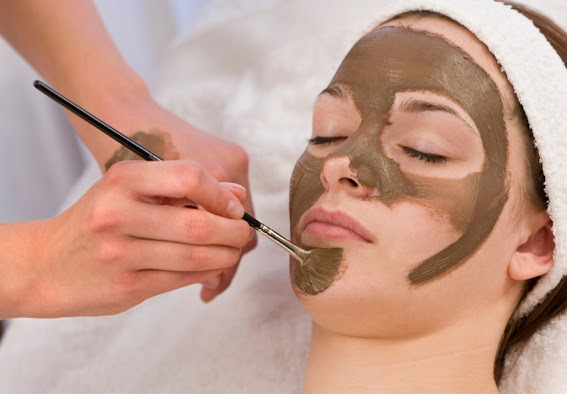Featured
- Get link
- X
- Other Apps
Skincare Routine for Oily Skin – Facts and Myths
Taking care of oily skin can be a hassle, especially when you're unsure of which skincare products and routines are right for you. With so many myths and facts surrounding oily skin, it's easy to feel overwhelmed and confused. In this article, we'll debunk some common myths and provide facts about skin care routines for oily skin, along with some tips for doing salon services at home, including facials.
5 Myths & Facts About Oily Skin Regime
When it comes to taking care of oily skin, there are many myths and misconceptions that can make it challenging to create a proper skincare routine. Here are five myths and facts about oily skin that you should know:
Myth
Oily skin does not need moisturiser
Fact
Moisturising is essential for all skin types, including oily skin. When you skip moisturising, your skin produces more oil to compensate for the lack of moisture, leading to more breakouts and oily skin. However, it's essential to choose the right moisturiser for your skin type. Look for lightweight, oil-free moisturisers that won't clog your pores.
Tip
Use a water-based moisturiser that contains hyaluronic acid, a powerful humectant that can attract and retain up to 1000 times its weight in water. This will help to keep your skin hydrated and balanced without making it greasy.
Myth
Overwashing can help control oil production
Fact
Overwashing your face can strip off natural oils, leading to dryness and irritation, which can make your skin produce more oil. It's recommended to wash your face twice a day, morning and night, with a gentle cleanser. However, if you have oily skin, you might want to consider washing your face a third time in the afternoon to remove excess oil buildup.
Tip
Use a cleanser that contains salicylic acid, a beta-hydroxy acid that can penetrate deep into your pores to dissolve oil and unclog them. This will help to control oil production and prevent breakouts.
Myth
Oily skin doesn't need sunscreen
Fact
Sunscreen is crucial for all skin types, including oily skin. Oily skin can still get sunburned, leading to further skin damage and ageing. Look for oil-free, non-comedogenic sunscreens that won't clog your pores.
Tip
Use a physical sunscreen that contains zinc oxide or titanium dioxide, which sit on top of your skin and reflect UV rays away from it. These ingredients are less likely to cause irritation and breakouts compared to chemical sunscreens that can penetrate your skin and cause allergic reactions.
Myth
Using oil-based products will make oily skin worse
Fact
Not all oils are bad for oily skin. Some oils like jojoba, grapeseed, and tea tree oil can help regulate oil production, reduce inflammation and acne, and nourish the skin. However, it's important to choose the right oil-based products for your skin type. Look for products that are specifically formulated for oily skin and contain these beneficial oils.
Tip
Use a lightweight facial oil that contains a blend of beneficial oils, such as jojoba, grapeseed, and tea tree oil. Apply a few drops to your face after cleansing and toning to lock in moisture and protect your skin from environmental stressors.
Myth
Scrubbing and exfoliating regularly will help control oil production
Fact
Scrubbing and exfoliating too frequently can strip off the skin's natural oils, leading to dryness, irritation, and increased oil production. Exfoliate your skin once or twice a week with a gentle exfoliant to remove dead skin cells and unclog pores.
Tip
Use a gentle exfoliant that contains natural ingredients like sugar, oatmeal, or clay. Avoid using scrubs that contain plastic microbeads, which can harm the environment and cause damage to your skin.
In conclusion, taking care of oily skin requires a specific skincare routine that focuses on balancing the skin's natural oils while providing adequate hydration. It's essential to debunk common myths and understand the facts to achieve healthy-looking skin. By following these tips, you can do facial at home, including facials, and maintain your skin's health and glow.
Popular Posts
Keratin Hair Treatment: Benefits, Care, And Steps To Do It
- Get link
- X
- Other Apps
Get Glowing Skin at Home with Easy-to-Make Face Masks
- Get link
- X
- Other Apps



Comments
Post a Comment